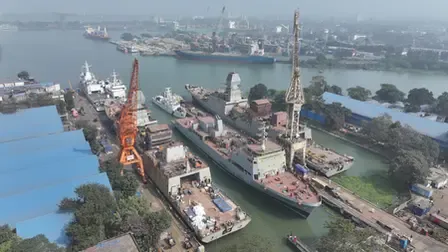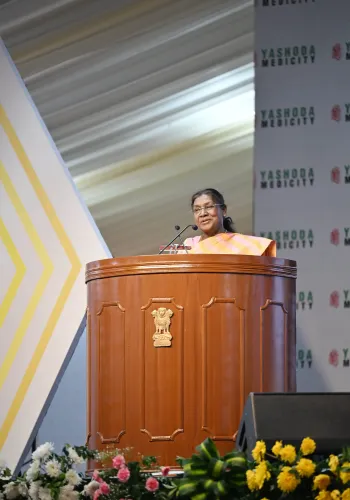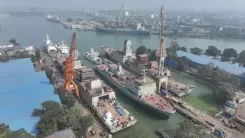Is There an Investigation Needed for the Rs 2,000-Crore Project Inside the Pallikaranai Ramsar Site?

Synopsis
Key Takeaways
- Urgent investigation requested by BJP spokesperson regarding environmental clearances.
- Project location lies within the boundaries of a Ramsar wetland.
- Collusion allegations against state authorities in granting approvals.
- Historical land record manipulations mentioned as significant issues.
- Environmental implications could lead to increased flooding risks.
Chennai, Oct 25 (NationPress) Tamil Nadu BJP spokesperson A.N.S. Prasad has formally reached out to Union Environment Minister Bhupender Yadav, calling for an urgent inquiry and the cancellation of environmental clearances and construction permits issued for a Rs 2,000-crore housing initiative in Perumbakkam, Chennai.
In his comprehensive representation, Prasad claimed that the 14.7-acre development, which includes 1,250 residential units, encroaches on the territory of the Pallikaranai Marshland, a site recognized as a Ramsar wetland and an area of ecological significance.
This marshland, covering 3,081 acres, was designated as a Ramsar site in April 2022 in accordance with the Wetlands (Conservation and Management) Rules, 2017.
He stated that any permanent construction or alterations that compromise the natural integrity of the wetland are strictly forbidden under these regulations.
As per Prasad, the advocacy group Arappor Iyakkam had previously lodged a 213-page complaint on October 23 with the Tamil Nadu Chief Minister, Chief Secretary, and the Directorate of Vigilance and Anti-Corruption (DVAC), alleging collusion among the State Environment Impact Assessment Authority (SEIAA), Chennai Metropolitan Development Authority (CMDA), Forest Department, and Water Resources Department in approving the project.
Emphasizing significant discrepancies, Prasad noted that project backers inaccurately asserted that the site was located 1.2 km away from the marshland, while it is actually adjacent to survey number 534/4, a documented marsh area.
During the SEAC’s 411th meeting in September 2023, the project was acknowledged as “abutting” the Ramsar site, and approval was postponed for further details on boundary coordinates and mitigation strategies.
Regardless, the SEIAA issued environmental clearance (File No. 9462) on January 20, 2025.
He also pointed out the “historical manipulation” of land records dating back to 1911, where original marshland portions (survey number 430) were divided, reducing its area from over 640 acres to merely six acres by 1993, thus enabling encroachments.
“These survey numbers are undeniably within Ramsar limits as indicated by maps from the Tamil Nadu State Wetland Authority and CMDA influence zones,” he remarked.
Prasad additionally noted that the CMDA authorized building permits on January 23, 2025—shortly after the environmental clearance—contravening its own Office Order 7/2025 issued in September, which bars any approvals within Ramsar sites or their one-kilometer buffer zones.
He highlighted that the project is also featured on the Tamil Nadu Real Estate Regulatory Authority (TNRERA) website without addressing these infractions.
“The Pallikaranai marsh serves as Chennai’s natural sponge, and its destruction will exacerbate future flooding. This situation exemplifies not only an environmental offense but also a profound administrative failure,” Prasad remarked.
He urged the Union Environment Ministry to initiate an immediate probe under Section 3 of the Environment (Protection) Act, 1986, examining the roles of SEIAA, CMDA, and other state departments, while collaborating with the DVAC for corruption inquiries.
Furthermore, he requested that all site operations be halted, that the environmental clearance and building permits be annulled, and that the encroached wetland areas be rehabilitated.
“The truth will surface if the Ministry reviews Arappor Iyakkam’s complaint, SEIAA minutes, and Ramsar maps. The project contravenes both national and international environmental regulations,” Prasad asserted, calling for stringent action against the involved officials and developers.









